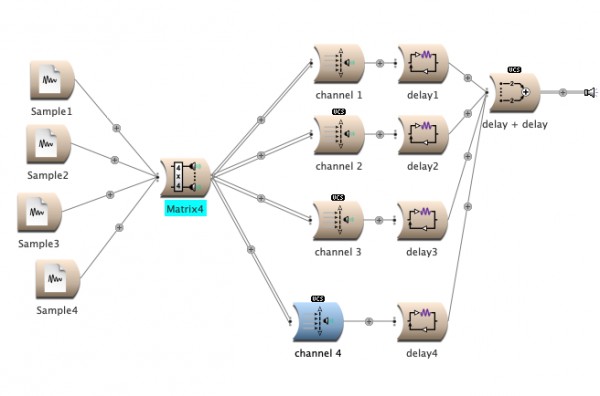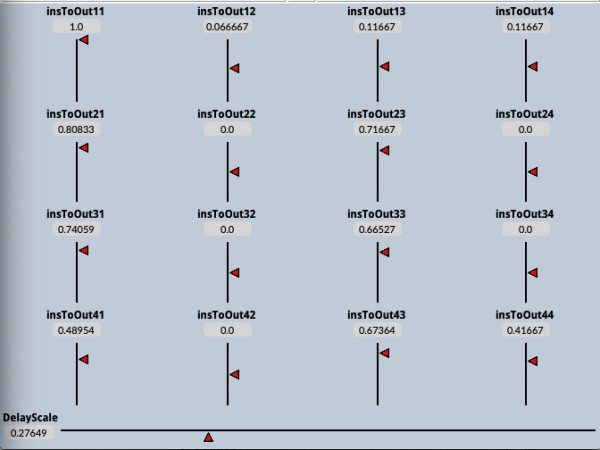Hi Eli,
I'm not entirely clear what you mean by "a sampler engine that could also re-sample itself but on a parallel path" or "split an stereo audio signal to multiple 'sends'", but it sounds achievable.
I suggest you try Matrix4 or Matrix8 with a ChannelSelector after them to tap off the channels going to each MemoryWriter.
Sounds in Kyma can have up to 8 output channels. Many are "mono" (which are actually not single channel outputs but output the same on the Left and Right channels) or stereo outputting on the first two channels. But other Sounds output 4 or 8 channels and Kyma supports up to 8.
Although some Sounds like Matrix4 say they "only work properly as the rightmost Sound" I haven't found that to be the case.
Here's a quick experiment I tried which uses Matrix4 in the middle of the flow to create a 4 channel output. I then split each channel off and put it through a different delay (which you could replace with MemoryWriters). It seems to work fine.


Perhaps the "rightmost" instruction is warning us that if we use a Matrix8 in the middle of a Flow, all of its channels won't necessarily find their way to the sound card. It all depends on what you do in the flow between the Matrix8 and the speaker icon. If you put a dual-mono Sound in the path between the Matrix8 and the speaker icon it will only process one of the Matrix8's channels and throw away the rest. Sounds like MultiToMultiChannel or ChannelSelector with Output8 can help you spilt apart and reconstruct an 8 channel connection within the flow.
As far as I can tell no Sounds within Kyma actually have direct access to the sound card's output channels. They all just construct multichannel outputs within the flow. If these Sounds are the rightmost in your flow then all their channels will indeed address the sound card's outputs. But they need not be the final Sounds in your flow and you can create entire octophonic flows that process, split, recombine and swap around the 8 channels on the way to the speaker icon (ie the sound card).